A Clever, Distinctive Riff on Lasagna
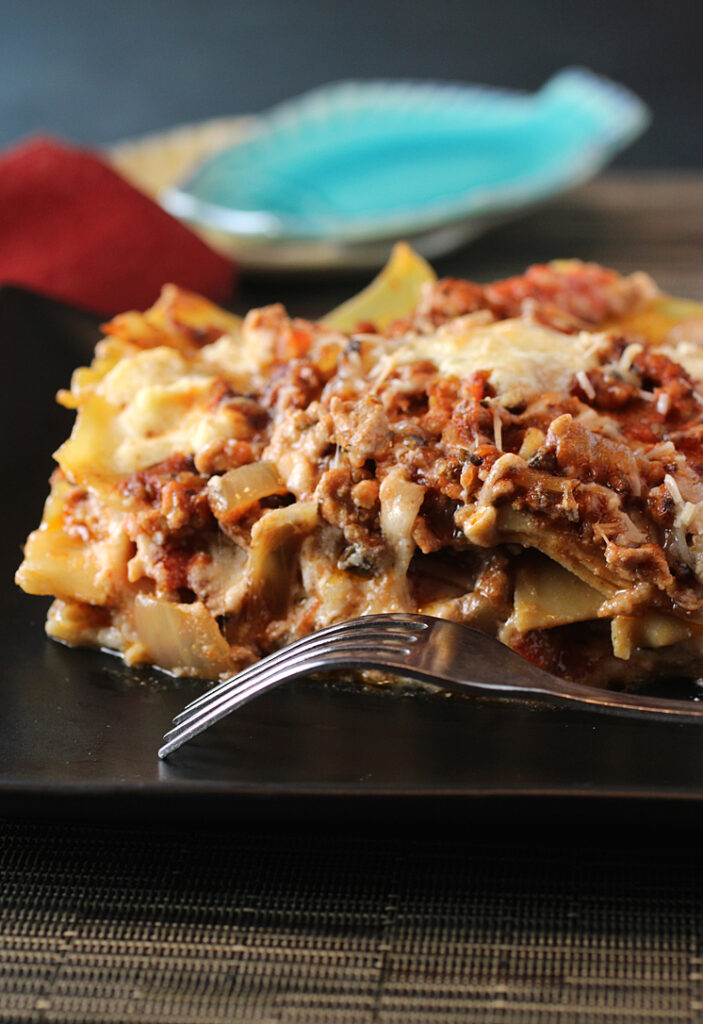
Chances are this will be the most unique lasagna you’ve ever sunk your teeth into.
That’s because in this version, the classic Italian dish veers Chinese — big-time.
The expected wide, frilly noodles with tomato sauce, abundant ground pork, and loads of stretchy cheese are there. But so are numbing Sichuan peppercorns, spicy chili oil, fragrant five-spice powder, and salty, funky preserved mustard greens.
Meet you new bestie, “Dan Dan Lasagna.”
This inventive recipe is from “Kung Food” (Clarkson Potter, 2023), of which I received a review copy. It was written by culinary content creator, and TikTok, YouTube and Instagram sensation, Jon Kung.
Born in Los Angeles, raised in Hong Kong and Toronto, and now living in Detroit, he pivoted from hosting pop-ups during the pandemic to growing a social media presence. His food emanates from what he calls his third-culture kitchen, seasoned and flavored by his personal experience as the child of immigrants who grew up in a new culture adopted by his parents. Feeling neither wholly American or Chinese, Kung considers his cooking American Chinese, or Third-Culture Chinese, a blend unique to his own upbringing.

The result is a collection of 100 recipes that tantalize with fun and flair, such as “SELT (Spam, Egg, Lettuce, and Tomato)” sandwich, “Spaghetti and Lion’s Head Meatballs,” “A Clay Pot Inspired By Jollof Rice,” “Hong Kong Chicken and Waffles,” and “Chile Chipotle Mango Pudding.”
“Dan Dan Lasagna” is assembled much like any traditional Italian lasagna. Boil the lasagna noodles, cooking them a little less since they will cook more once they’re put into the oven. The directions state to drain and rinse the noodles with cold water, and then toss with butter. I added that it’s best to melt the butter beforehand, since once the noodles are cold, it will be difficult to distribute the butter evenly if it’s at room temperature, but still solid.
The sauce is a thick mixture of a lot of ground pork, seasoned with onions, garlic, ginger, cumin, dried chilies, and Szechuan peppercorns. The recipe didn’t state to pulverize the peppercorns. But you should do so, either with a mortar and pestle or in a spice grinder so that the flavor is distributed better throughout the dish and you won’t find yourself biting down uncomfortably on a whole peppercorn.
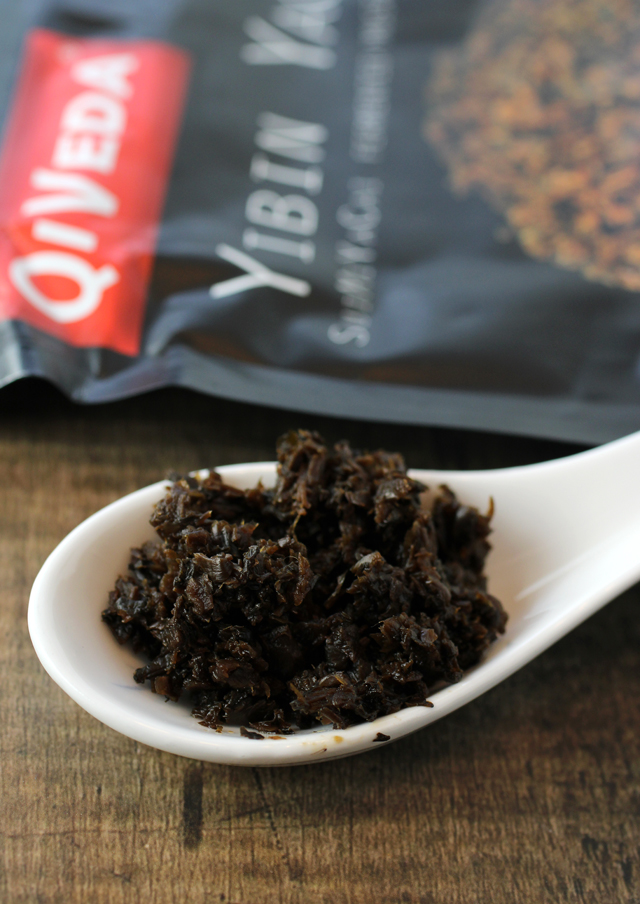
The saucy mixture also includes canned tomatoes, chicken broth and soy sauce, as well as ya cai or preserved mustard greens, which you can find in packages in Asian markets or on Amazon. The stems of mustard greens are dried, fermented in salted water, boiled with brown sugar, then fermented again with other spices such as clove, garlic, and nutmeg. Dark and finely shredded, this condiment tastes potently of umami with a little saltiness and slight earthy-funky fermented note that gives it great depth. It’s like a close cousin to Chinese fermented black beans in taste.
Once everything is ready, start layering the noodles in a large baking pan with the meat sauce, and a mixture of ricotta stirred with grated mozzarella and grated Parmesan. Sprinkle on a dash of five-spice powder and drizzle on a little chili oil (store-bought or homemade with the recipe below), before repeating with more layers. Instead of chili oil, I actually used a little chili crisp instead, which worked wonderfully.
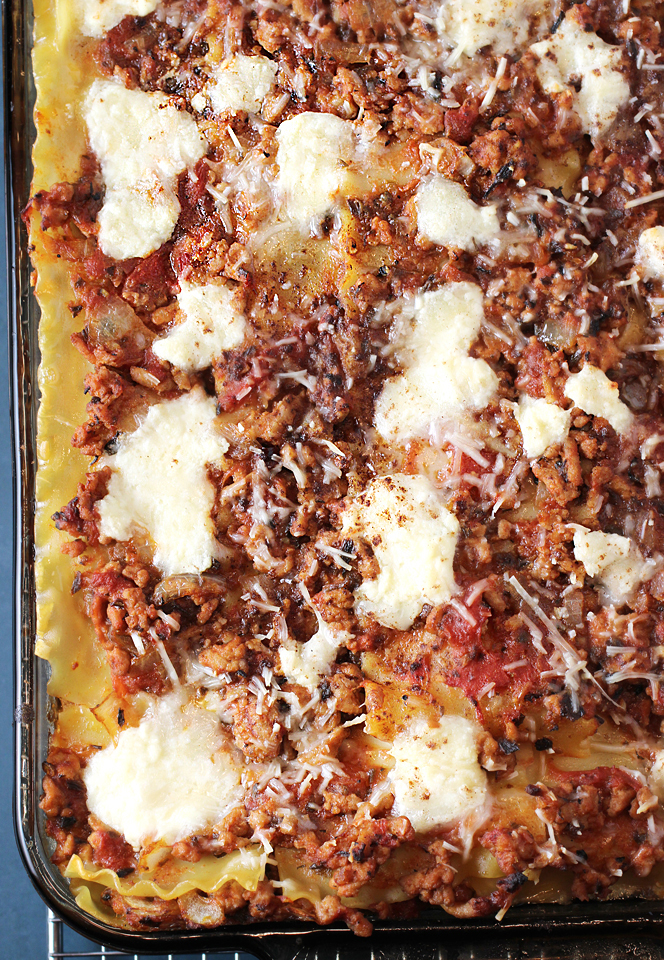
If you like me — aren’t the best at dividing up your ingredients evenly — you may end up with not quite enough ricotta mixture to cover the top of the lasagna. No worries. Just add what you can, and then spoon on a little more grated Parmesan like I did.
Bake the lasagna until it’s hot and the cheese is melty.
I can’t say enough about how mouthwatering this dish is. It’s hearty and comforting like a lasagna should be. But it’s much bolder in flavor. There’s a pronounced savoriness coupled with moderate spiciness that tickles the tongue and tingles the lips, with enough creamy, gooey cheese to up the richness and cool things off a bit.
Kung says this 9-by-13-inch pan of lasagna serves four. Maybe if you were a sumo wrestler. For the rest of us, I think it serves 6 easily, or even 8. So, that’s what I amended the recipe below to reflect.
For another variation, he suggests swapping out the ground pork for ground lamb instead, with a touch more cumin.
I can’t wait to try that version, because I have no doubt that I will be enjoying this lasagna again soon. It’s one of those dishes, in which one taste greedily leads you to another and another.
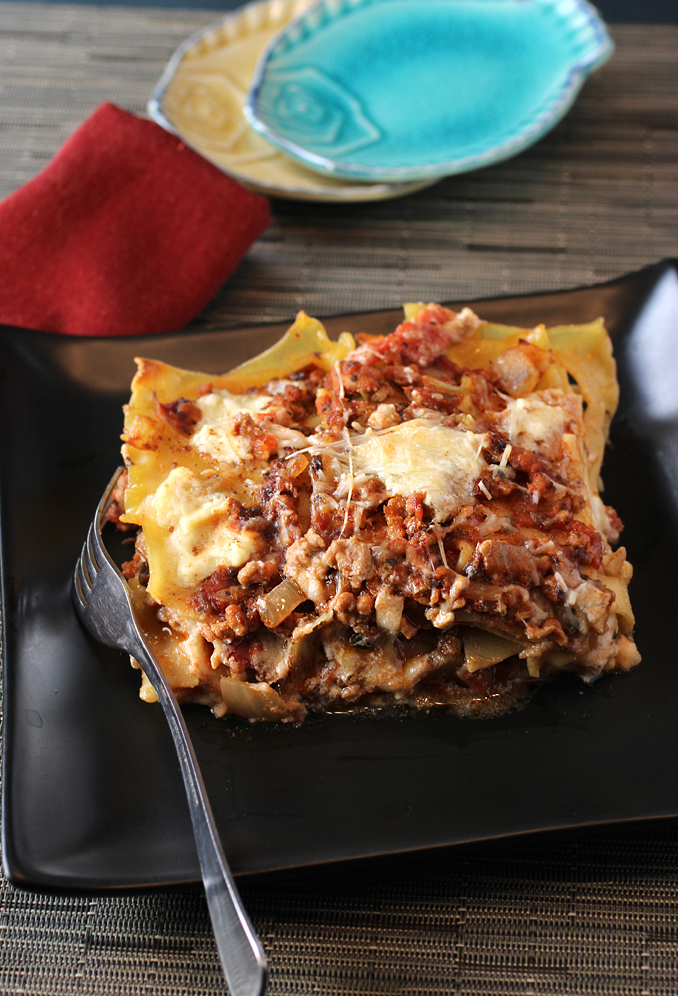
Dan Dan Lasagna
(Serves 6 to 8)
For lasagna:
Kosher salt
16 ounces lasagna noodles (preferably the curly edged kind)
2 tablespoons unsalted butter, melted
1 (15-ounce) container of ricotta cheese
16 ounces mozzarella cheese or Wisconsin Brick, grated
1/4 cup grated Parmesan or Manchego cheese, or crumbled goat cheese
For dan dan sauce:
1 tablespoon neutral oil
1 1/2 pounds ground pork
1 medium white or yellow onion, diced
8 garlic cloves, grated
1 tablespoon grated fresh ginger
1 tablespoon Szechuan peppercorns, ground
2 teaspoons ground cumin
2 tablespoons chopped dried Szechuan chilies or other hot red chilies
1/4 cup ya cai (preserved mustard greens)
1/4 cup water or store-bought chicken broth
3/4 teaspoon light soy sauce
1 (28-ounce) can whole peeled San Marzano tomatoes, with their juices, blended or mashed
1 tablespoon cornstarch
Plus:
Neutral oil for greasing
Chili oil, store-bought or homemade (see recipe below)
Five-Spice Powder
Make the lasagna: Bring a large pot of salted water to a boil over high heat. Add the lasagna noodles and cook for a minute or so less than the package instructions indicate (they’ll continue to cook in the oven.) Drain, rinse with cold water, and toss with the butter to prevent sticking.
In a large bowl, mix the ricotta with 1 teaspoon salt. Stir in the mozzarella and the Parmesan and set aside.
Make the dan dan sauce: In a large saute pan, heat the oil over medium-high heat. Add the ground pork and cook, stirring often to break it up into smaller pieces, until browned and mostly cooked through, about 5 to 8 minutes. Transfer to a bowl.
Return the pan to medium-high heat and add the onion, garlic, ginger, Szechuan pepper, cumin, dried chilies, and ya cai. Cook, stirring often, until the onion is translucent, about 3 minutes. Add the water or broth, soy sauce, tomatoes with their juices, and cornstarch and stir to mix well. Return the pork to the pan and use your spoon to further break down the pieces of pork for an even consistency.
Reduce the heat to low and cook until the loose liquid has evaporated as much as possible, and you have a very thick and uniform meat sauce, about 3 to 5 minutes. (The sauce can be cooled and stored in an airtight container in the refrigerator for up to 3 days.)
Preheat the oven to 350°F. Grease the bottom and sides of a 9-by-13-inch casserole dish with an oiled paper towel.
Spoon a very thin layer of meat sauce across the bottom of the oiled dish. Place a layer of noodles (usually 3 or 4) side by side over the sauce and then add one-quarter of the cheese mixture. Follow with another noodle layer, one-third of the remaining meat sauce, and one-third of the remaining cheese. Then drizzle with a little chili oil (about 1 teaspoon) and add a few dashes of the five-spice powder (about 1/2 teaspoon). Repeat two more times, until you have four layers of noodles, finishing with the last of the cheese on top. Sprinkle with more chili oil and five-spice.
Bake for 30 to 45 minutes, until the lasagna is bubbling and the cheese layer on top begins to brown. Remove from the oven and set aside to cool and settle for 20 minutes before slicing and serving.
Basic Chili Oil
(Makes about 1 cup)
1/2 cup Szechuan hcili flakes
1 cup neutral oil
Place the chili flakes in a large metal bowl that will be big enough to contain the bubbling-hot oil when it’s poured in.
In a small saucepan, heat the oil over medium-high heat to 300°F. Slowly pour the oil over the chili flakes; it will bubble aggressively as you add it and should smell toasty and warm. Let steep for at least 45 minutes, or until cool to the touch, then strain the oil through a fine-mesh strainer into another metal or glass bowl or a lidded jar. Store at room temperature for up to 1 month or in the fridge for up to 6 months.
Adapted from “Kung Food” by Jon Kung
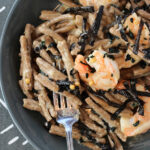
More Fun Asian Riffs on Noodles: Creamy Miso Pasta with Shrimp
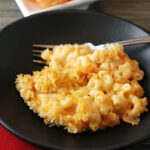
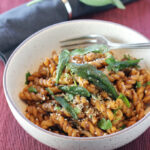
And: Miso Brown Butter and Crispy Sage Pasta
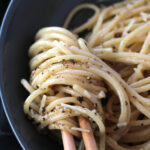
And: Sichuan Cacio e Pepe
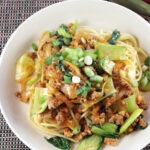
And: Sichuan Pork Ragu
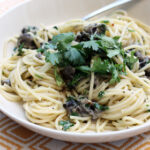
And: Vietnamese Escargot Vongole
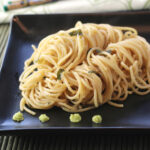

I like the recipe.
Hi FranceLaVoie: So glad! Hope you give it a try.